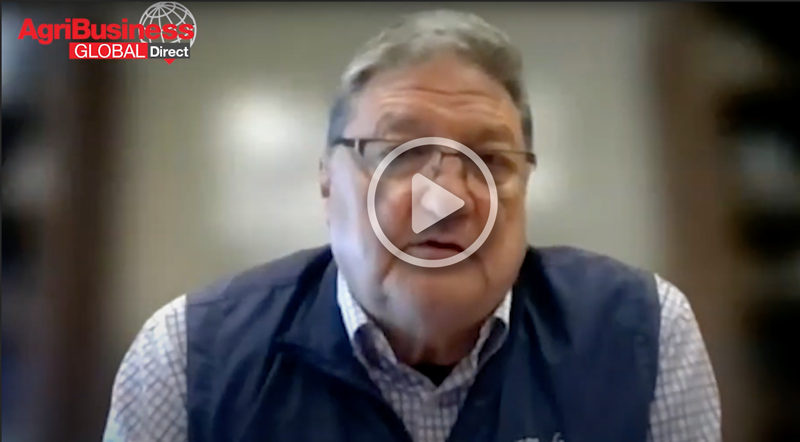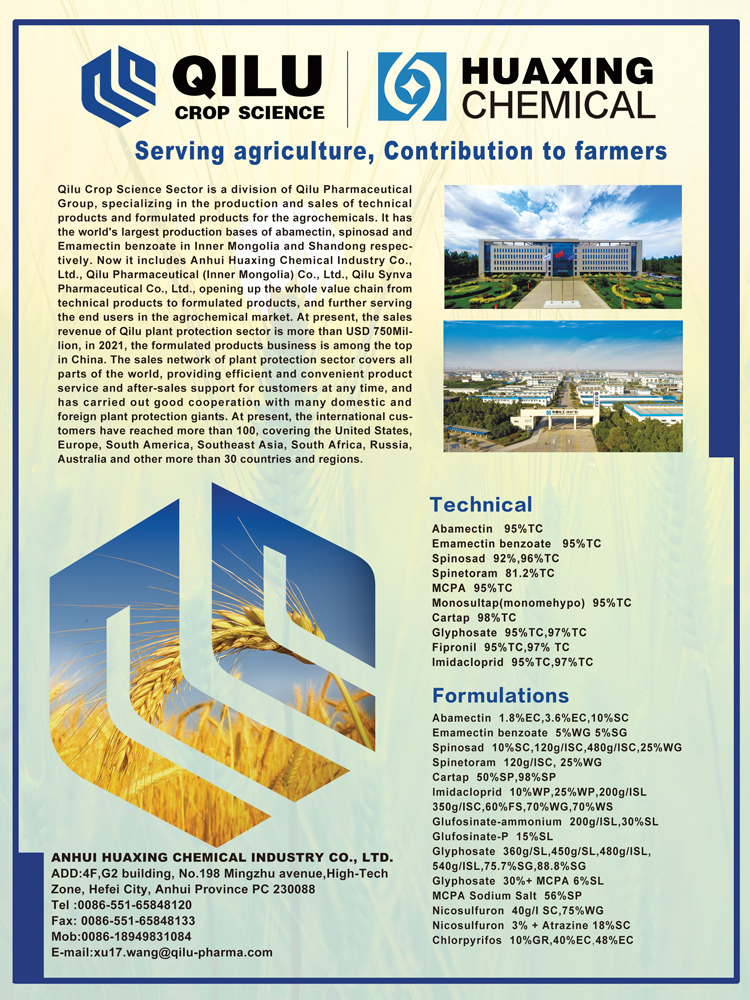From the Editor
Scroll Down to Read
 |
From The EditorRenee Targos |
Conversations with Industry Experts
AMVAC’s Bob Trogele Offers His Perspective on Fast-Changing Agribusiness Trends
The crop protection industry is experiencing an accelerated metamorphosis. Big players are merging or acquiring biological companies and bringing those new products to market. Other developments like ag tech and regenerative ag practices are being invested in globally by food production companies and governments. It’s difficult to gauge where the industry stands with so much shifting sand, which is why we interviewed Bob Trogele, Chief Operating Officer and Executive Vice President for AMVAC Corporation. AMVAC is growing in three crucial areas: crop protection, biorationals and specialty nutrition, and precision ag technologies. Trogele shares AMVAC’s strategies and his perspective on surviving today’s crop protection market. If you’d like to hear more from him and meet him in person, he will be speaking at the AgriBusiness GlobalSM Trade Summit on August 9-10, 2023, in Aventura, FL.
 Meet your expert: Trogele has enjoyed a 35-year leadership career in agribusiness, working for companies such as Hoechst, Aventis, Bayer, Schering, and FMC. He has comprehensive work experience and a deep knowledge about Europe, Asia, and the Americas at all levels of agribusiness (chemical, nutrient, seed, biorationals, and precision agriculture). In addition, he has performed at the country, regional, and corporate general management level. Trogele also has served as an Adjunct Professor at the Berlin School of Economics & Law for 23 years, educating master-level business students as future leaders in global business and society. He is also an AgriBusiness Global advisory board member. Here’s what he has to say about the current changes in agribusiness.
Meet your expert: Trogele has enjoyed a 35-year leadership career in agribusiness, working for companies such as Hoechst, Aventis, Bayer, Schering, and FMC. He has comprehensive work experience and a deep knowledge about Europe, Asia, and the Americas at all levels of agribusiness (chemical, nutrient, seed, biorationals, and precision agriculture). In addition, he has performed at the country, regional, and corporate general management level. Trogele also has served as an Adjunct Professor at the Berlin School of Economics & Law for 23 years, educating master-level business students as future leaders in global business and society. He is also an AgriBusiness Global advisory board member. Here’s what he has to say about the current changes in agribusiness.
ABG: AMVAC offers synthetic crop protection, biosolutions, and ag tech — a diversified portfolio that reflects current ag industry trends. Do you think companies that aren’t diversifying will be left behind in the next 10 or 20 years?
BT: Your statement is correct. All three segments that we’re investing in are growing at different compound annual growth rates (CAGRs). This year, it looks like growth will continue with our GreenSolutions segment, which is growing by 40% versus a segment growth of 10% to 15% in the overall biosolutions segment — so outpacing the market. Or versus the single digit growth rate of our synthetic crop protection business.
As far as the question goes, I think my answer is simple. Standing still is never an answer in any industry. Think of Kodak. They had digital on the shelf but didn’t see the need to diversify their offering.
In agriculture, we see many technology ventures expanding into market opportunities for producers. And therefore, the opportunities to service emerging technology sectors like robotics are emerging.
There also remain many challenges in agriculture, like water utilization, input reduction with precision applications, consumer pressures as preferences change, government regulations, and investor demands. I think opportunities will emerge for those who are adaptive to change and agile in execution. I like to think of ourselves as one of those companies, as we are investing resources into the biorationals/specialty nutrition and precision application spaces.
ABG: One of the points you made in the Black Swans article you wrote in the January 2023 ABG DIRECT issue is that agrochemical industry needs to create tactics for public relations for educating the public. Do you see any associations doing that well and does AMVAC have a public relations strategy for the mainstream consumer?

BT: There are a lot of efforts there. I would say there’s not one concerted effort inside the industry that targets consumer preferences. I think people monitor the trends, but from a public relations strategy, I would say there are single initiatives, either by single companies or by single industry associations with each having a very different focus.
For example, CropLife Asia focuses on stopping the sale of fraudulent products — products that may hurt producers, and maybe even hurt consumers, depending on the residues. That market itself is estimated to be about 20% of the Asian market as far as inputs are concerned, so it is a real problem.
The retailer associations, like Agricultural Retailers Association in the United States, focus on issues like transportation or site security. Most commodity groups, like the National Corn Growers Association, focus on producer challenges like trade agreements and sometimes marketing. It really varies depending on the different interests.
I think the most difficult challenge is educating the urban consumer. They are long removed from the producer and from the farm physically. They need to understand the food supply chain. When issues like salmonella occur or food prices jump, mistrust builds among consumers.
Then you have political activist tactics, sometimes misleading consumers, when it comes to facts about the highly regulated supply chain, thinking that this norm is about food and safety. You see that creeping up everywhere. It’s a real issue. I don’t have a solution to answer that issue today.
ABG: There is a lot of talk about overstock in 2023. Is this something that AMVAC is facing? And if so, how are they dealing with it?
BT: That’s correct about there being overstock. We work at being a reliable supplier with an excellent customer service level. So how does that work? We try to match our manufacturing to demand.
 We traditionally carry only about 25% to 30% of net sales as inventory in 2023.
We traditionally carry only about 25% to 30% of net sales as inventory in 2023.
On the supply side, we experienced, for the first time, supply challenges ourselves for two key raw materials. In 2022, we needed to deal like many in the industry with what I call customer angst on the demand side. That’s where the overstocking happened. It was difficult for us due to high demand for growing technology solutions. We were experiencing 20% plus growth, like many of our industry colleagues, but our policy remains to see a natural demand flow for our products. I really like to see the low season and seasonal inventories with our channel partners.
The ag supply chain is not always predictable due to seasonality. There are shifting economics and rescue pest pressure markets. Geopolitics is also starting to play a major role, if we look at the situation in the Ukraine. We deal with it by really planning with our customers, anticipating disruptions, and having dual supply wherever possible. Then really staying loyal to our suppliers.
But in regard to overstocking as mentioned earlier, this is not our policy, but it is happening in the industry. I believe it is sometimes driven by a quarterly intention to meet shareholder pressure.
ABG: What is the overstock going to do to the market?
BT: Overstocking always has a number of effects. Primarily, it usually means that the margins are going to be squeezed. Prices are going down because the supply is higher than demand. It favors the producer this year. I think the big negative issue is that the working capital itself at the channel level is expensive simply because the interest rates have risen so much on certain product categories like fertilizers or nonselective herbicides.
Many of my customers report that they are upside down, meaning they’ve got a higher price inventory, and they’re selling at a lower price. That’s not a healthy situation. Some of them will have structural issues at the end of the season and some of them will, unfortunately, maybe even disappear. Those are categories we try to avoid from our standpoint. We don’t sell into those bulk markets or those commoditized markets because they shift rapidly. 2023 feels a little bit like 2009. A number of companies that were in the glyphosate business in 2009 really had major issues on the manufacturing side. In 2009, the channel partners faced the same issues that they’re facing now.
Companies really tried to hedge as they saw inflation last year. The year before, some companies thought if prices keep going up, they should buy now to bulk up their stock and take advantage of the buying situation.
It reversed very quickly on them, and some managed it well, while some have not managed it well. I would say it doesn’t bode well for some going into 2024. You’re going to have a number of companies that are going to be highly successful, and you’re going to have some that are highly unsuccessful. And there is going to be very little in the middle.
ABG: Do you think with synthetic crop protection products dropping in price, producers will choose those products over trying biologicals in 2023?
BT: We haven’t seen any of that. In fact, in the first quarter, we had a growth rate of what we predicted at 40%, so we feel like we’re on track. I think those customers that are going to use biorationals have committed to that. I don’t think it’s an issue of: Can I get a better price for glyphosate? I think these are two separate issues.
I see that segment continuing to grow as people get more comfortable with the technology. There are still those maximum residue levels (MRLs) demands in Europe and consumer trends have not changed.
 I think if you look at soil health and nitrogen fixation, the trend there is to try to reduce, but nitrogen applications are not going to go away totally. I think growers will still try to find a sweet spot where they can reduce the synthetic with a biostimulant that has nitrogen fixation.
I think if you look at soil health and nitrogen fixation, the trend there is to try to reduce, but nitrogen applications are not going to go away totally. I think growers will still try to find a sweet spot where they can reduce the synthetic with a biostimulant that has nitrogen fixation.
ABG: Finding good workers today is difficult, how is AMVAC working to keep and find good employees?
BT: Well, first of all, I agree. This is a major challenge in agriculture. But you know industries across the board and every circle that I associate with, labor is top of mind. It’s a headache that keeps people up at night.
You know it goes from the factory all the way to the farming community. I think it’s a result of the mergers and consolidation over the last 20 years. I think that that’s taken its toll on the youth coming through the industry and really producing generational gaps.
And then, of course, agriculture competes with the other industries, too. We’ve seen people from our factories go to other manufacturing companies outside the industry. So, it’s very competitive out there.
When it comes to us, we attract talent via our culture of entrepreneurship where we really allow employees to make a difference. We offer things like an employee share plan. Ten percent of the company is owned by employees, so employees have skin in the game. We offer Cadillac health plans. We are very diverse, so people feel very comfortable.
I think we’re not for everyone, but for those who join us, the rewards professionally and personally seem to attract them and retain them. Our best calling card is our team and our leadership. I think many will join us due to the reputation that we have in the industry. People work for people, and if you have a successful team, that attracts excellent talent. •
Having trouble seeing the video?
https://tradesummitbeijing.oss-cn-hongkong.aliyuncs.com/Industry%20Insights/Bob%20Trogele%201.mp4
Photos, from top
Roxana – stock.adobe.com
Zoran Zeremski – stock.adobe.com
Maksym Yemelyanov– stock.adobe.com
Deemerwha studio – stock.adobe.com
Photo of Bob Trogele courtesy of Meister Media

